Russia Under Stalin Part II: Stalin’s Rule

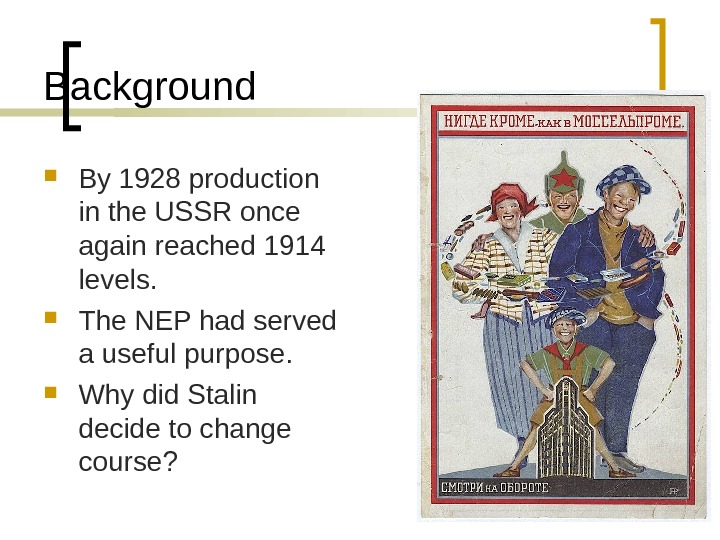

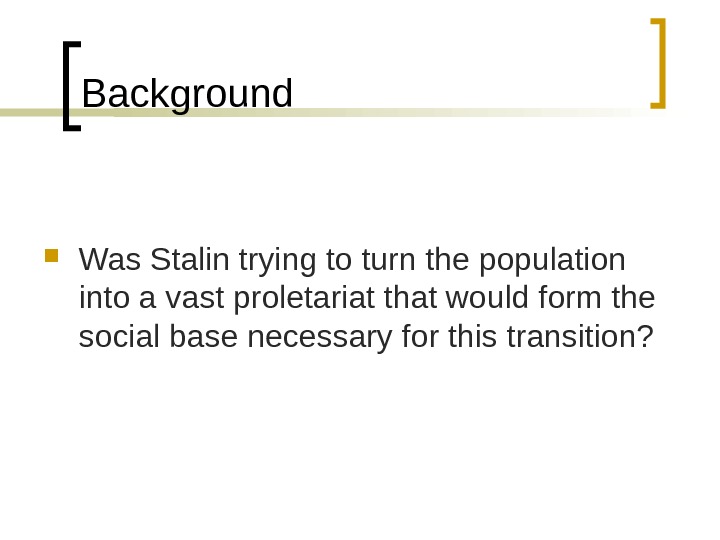
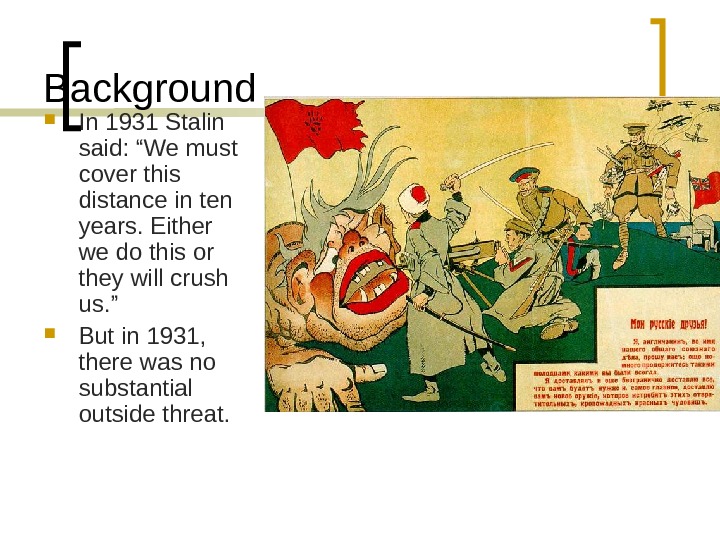

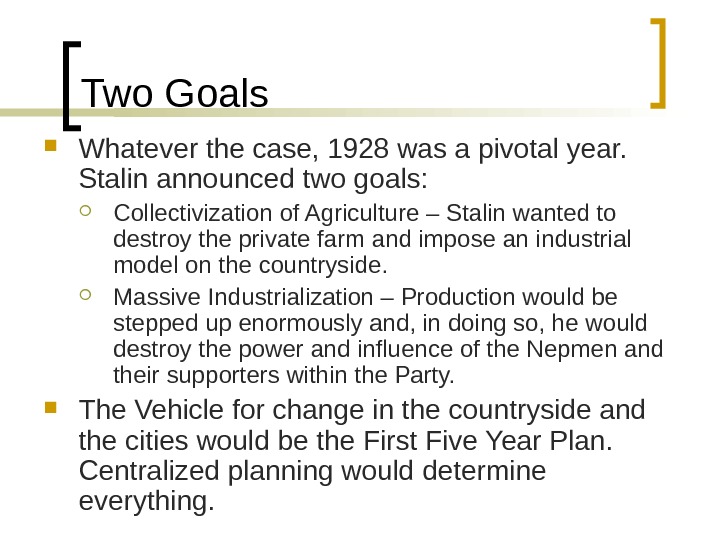

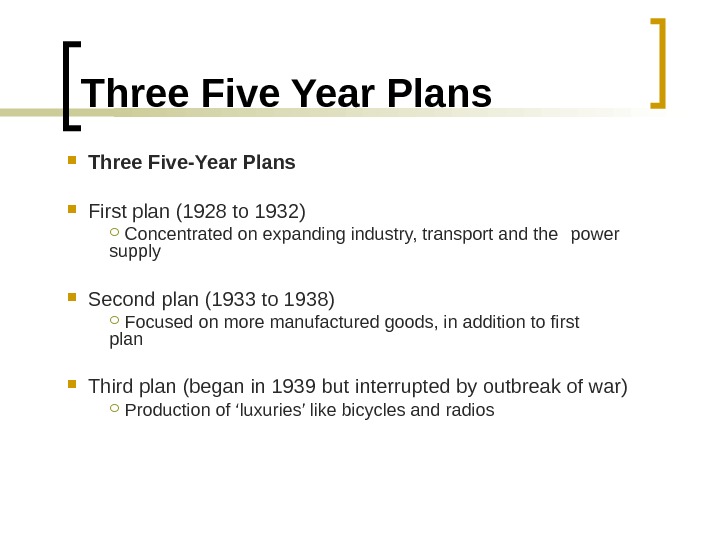
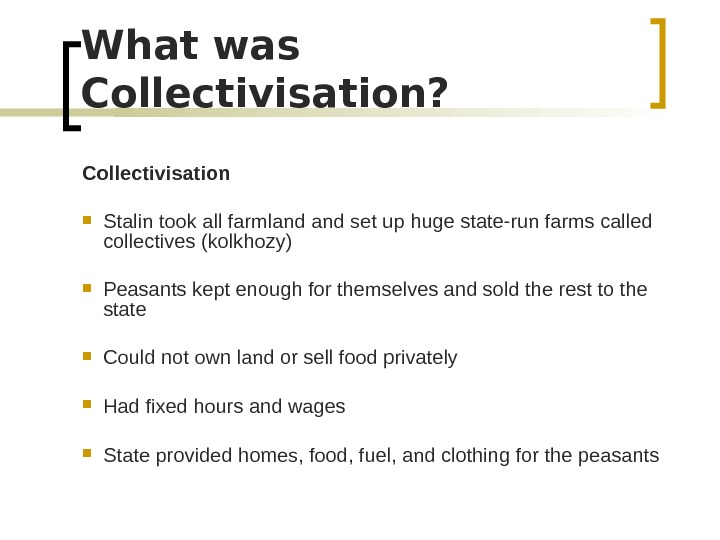
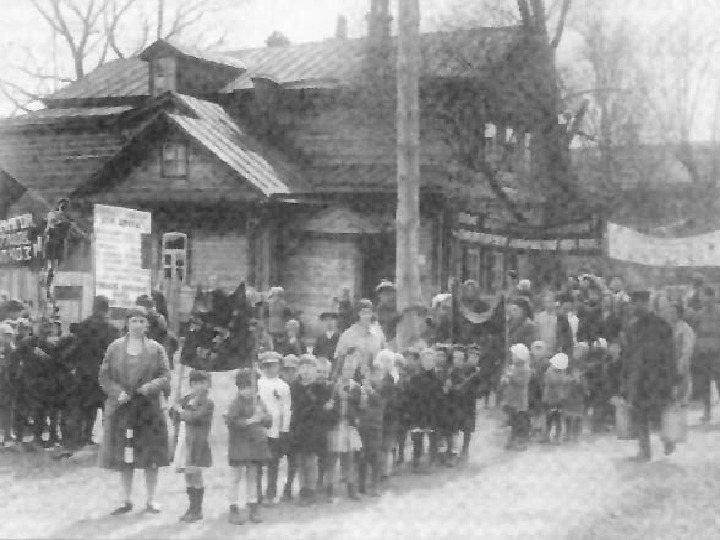



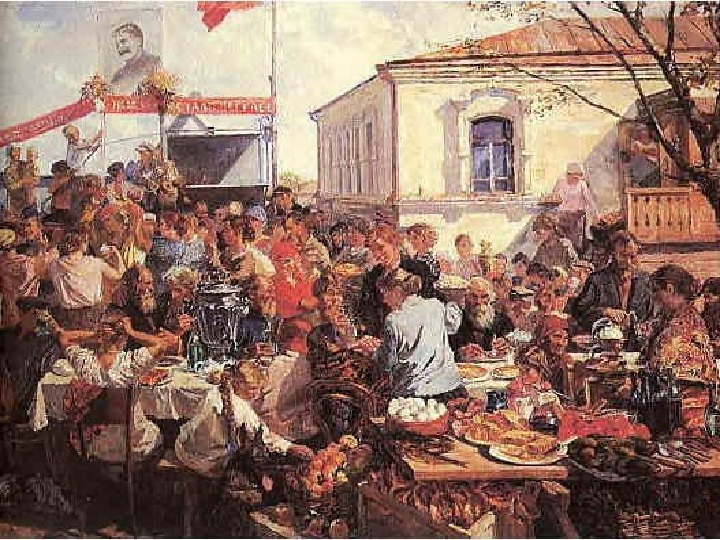
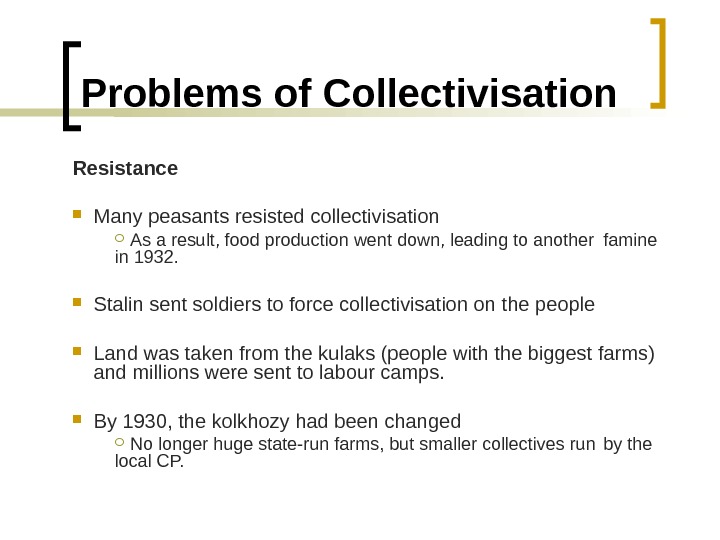
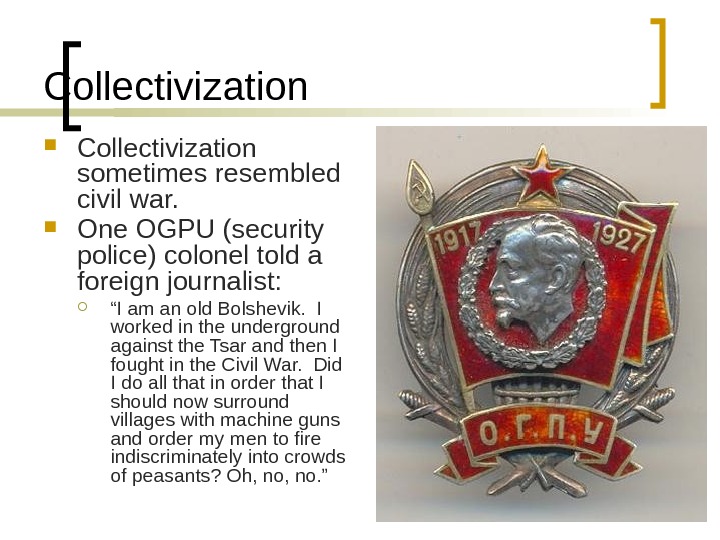


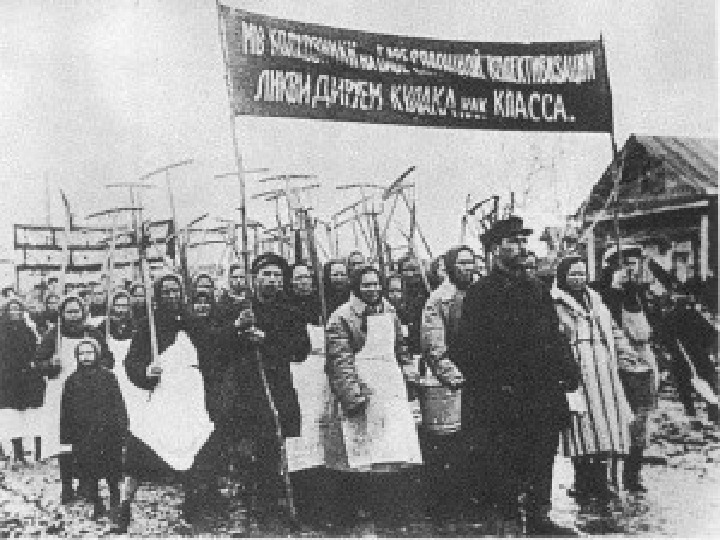
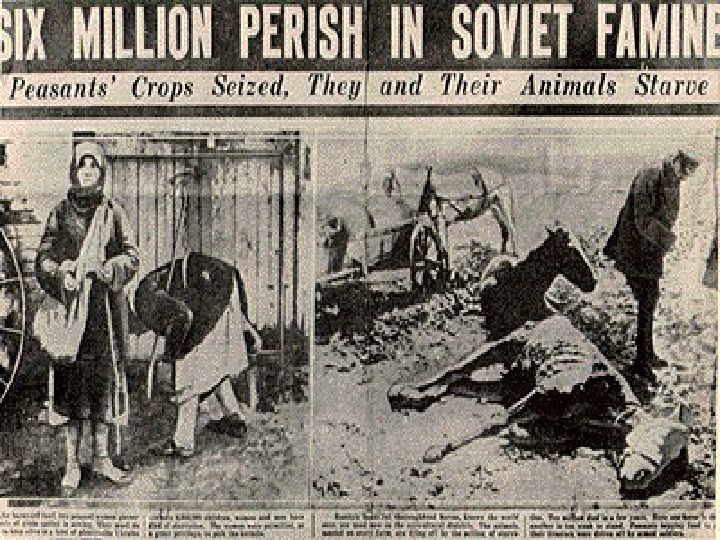

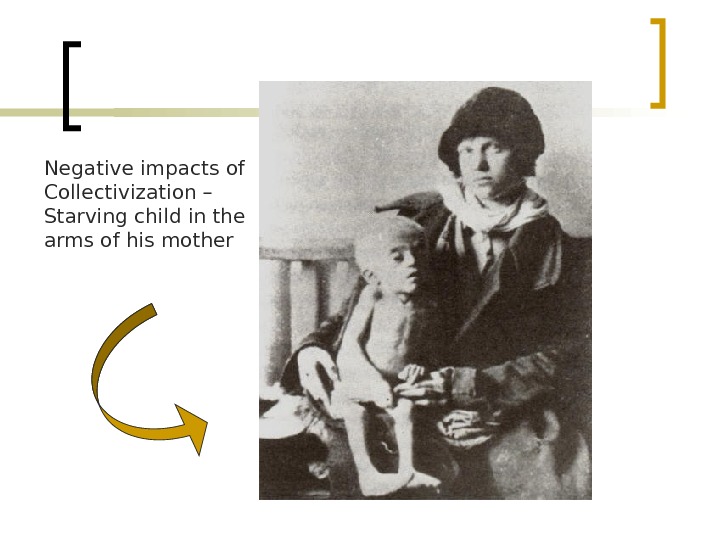
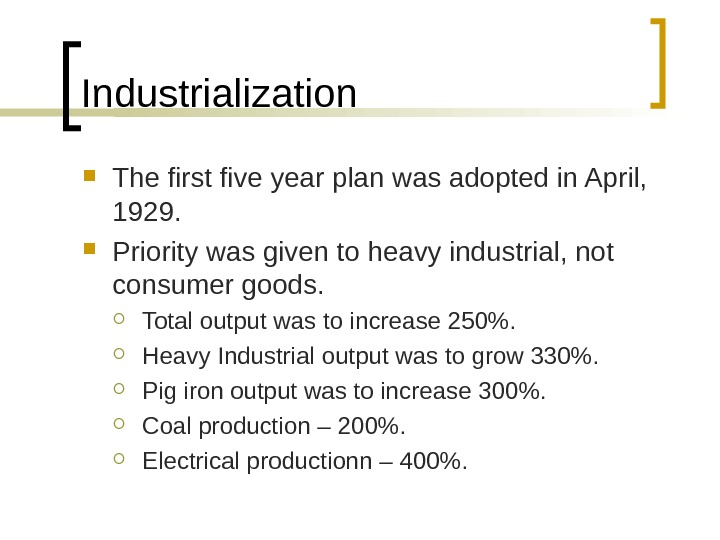
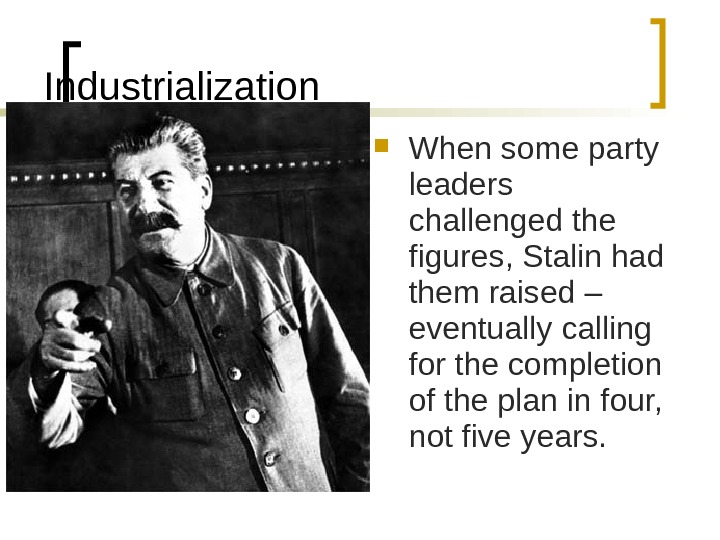
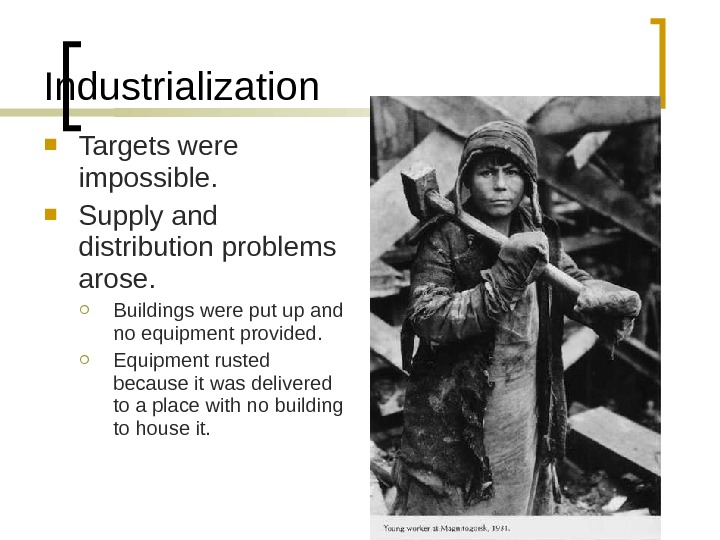
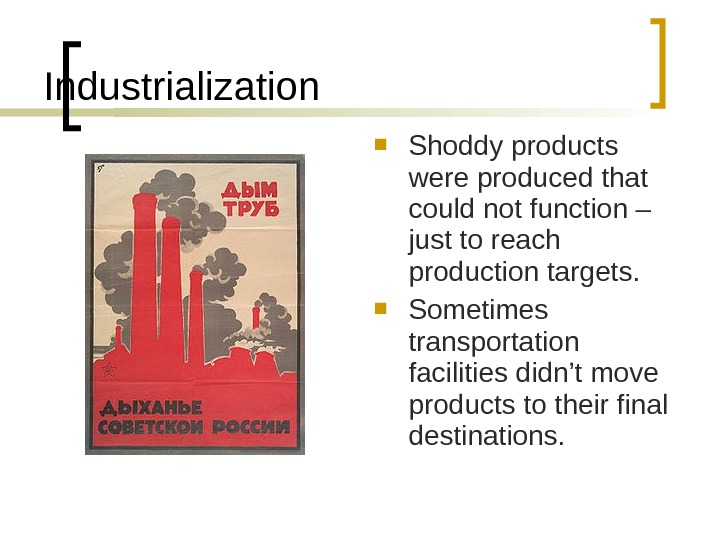

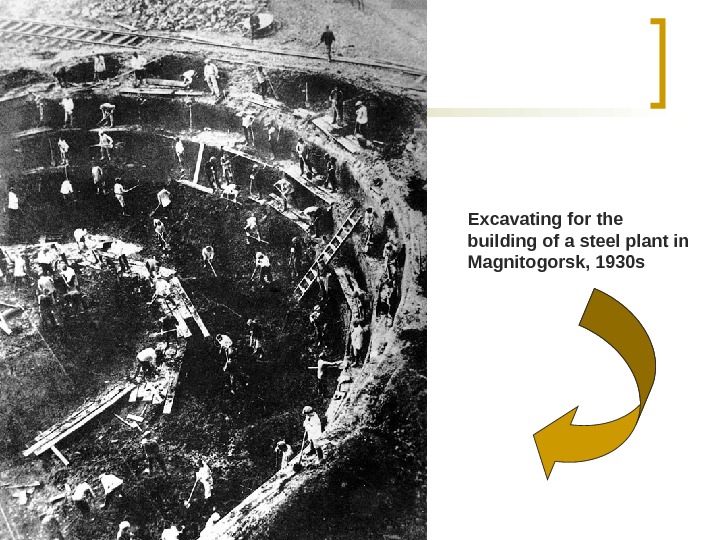
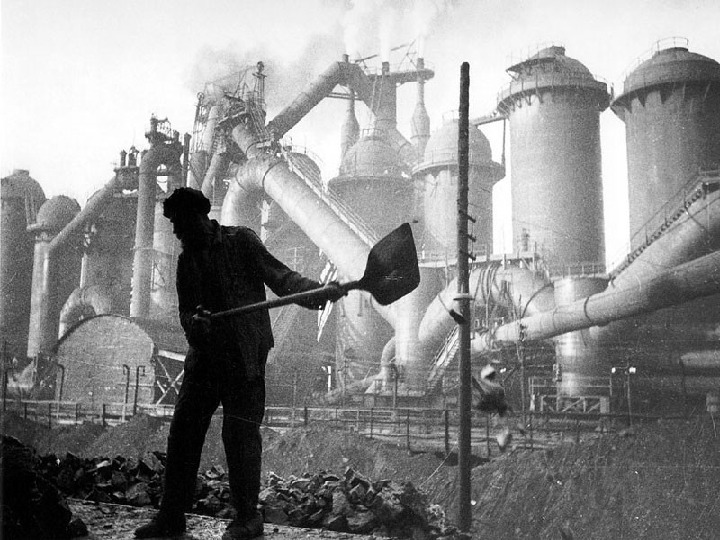

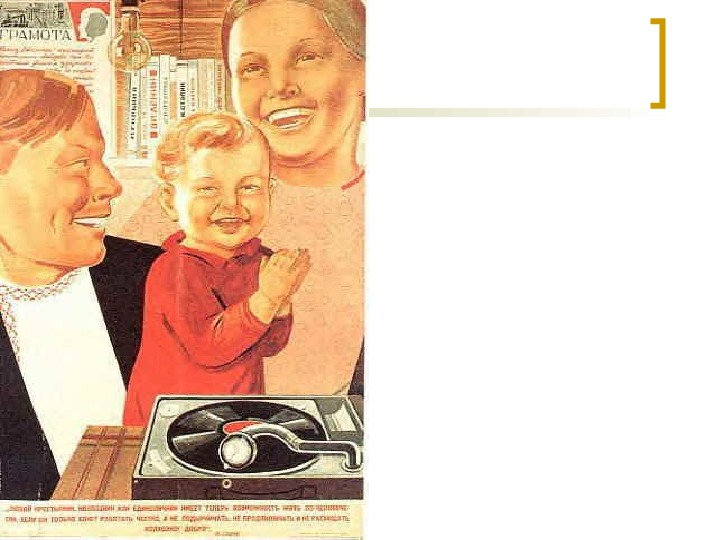
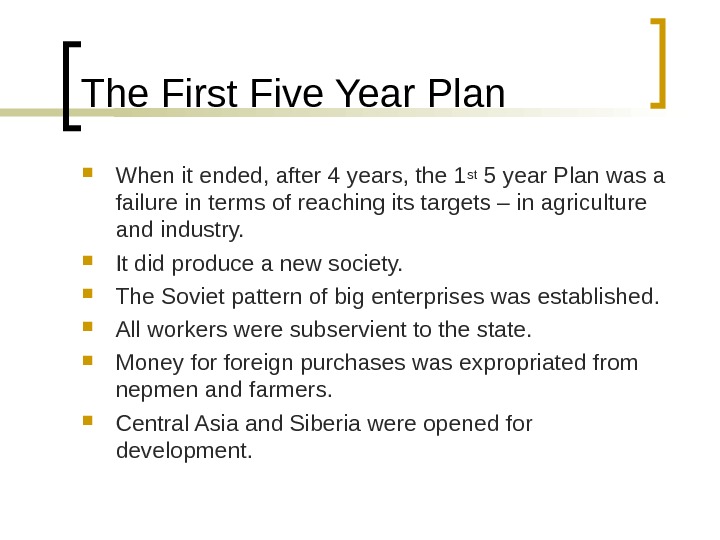
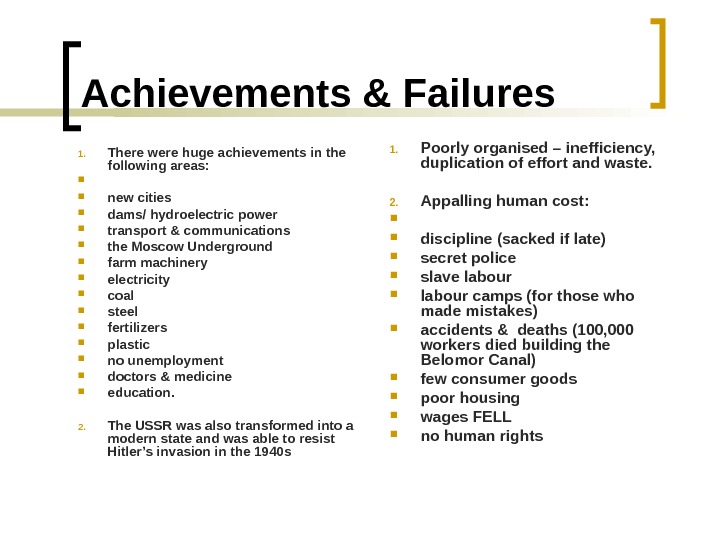


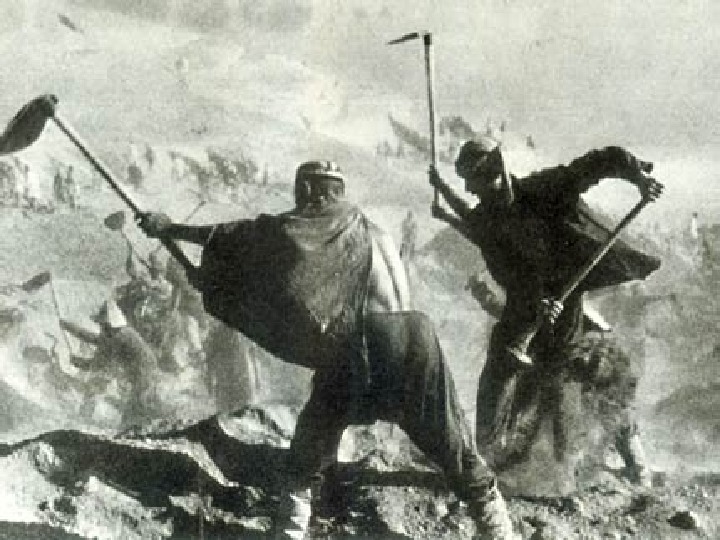
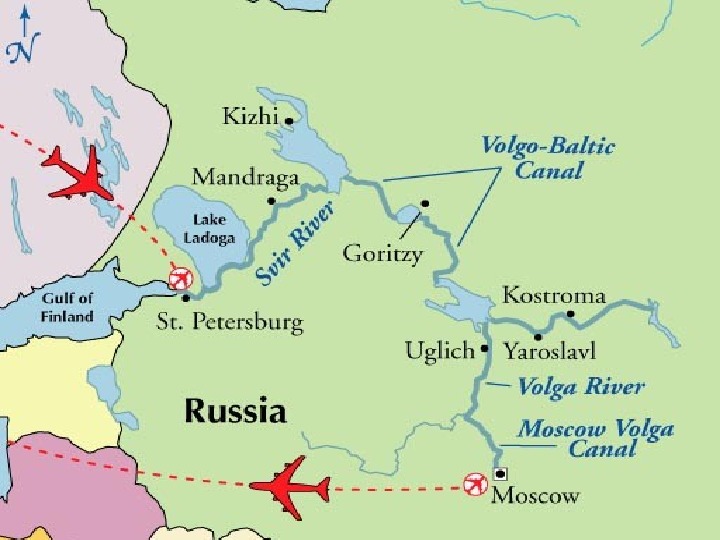


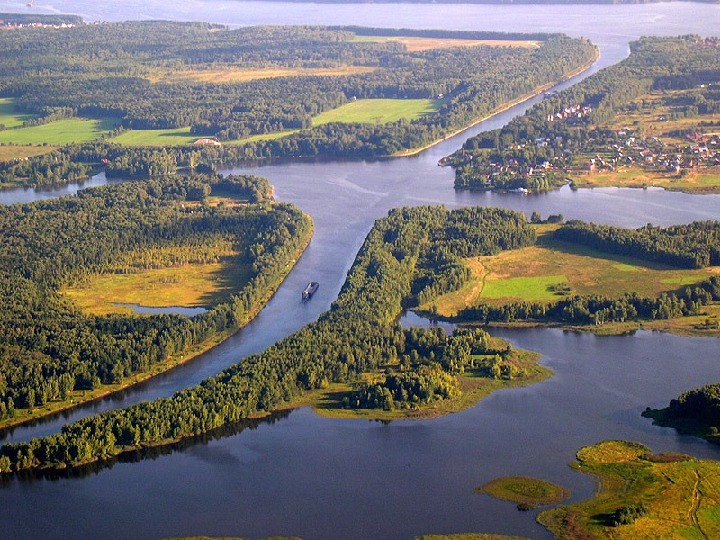
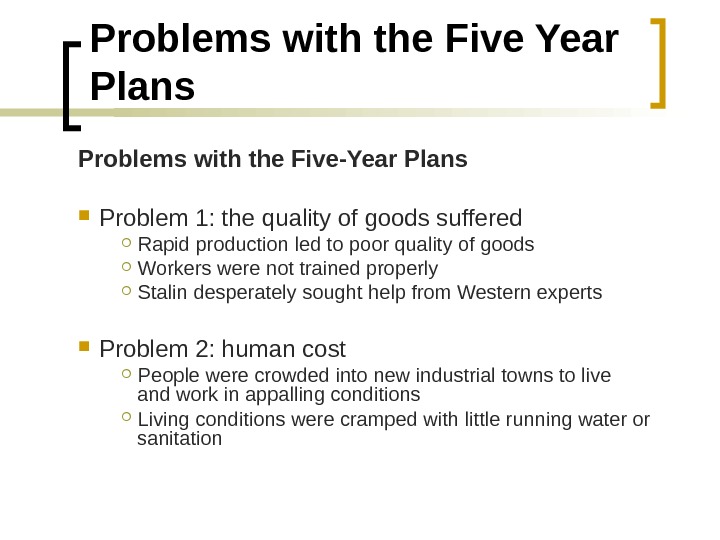

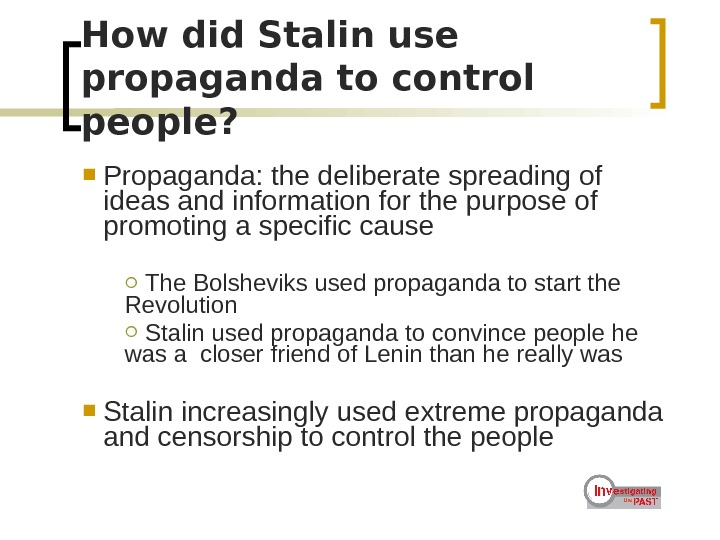
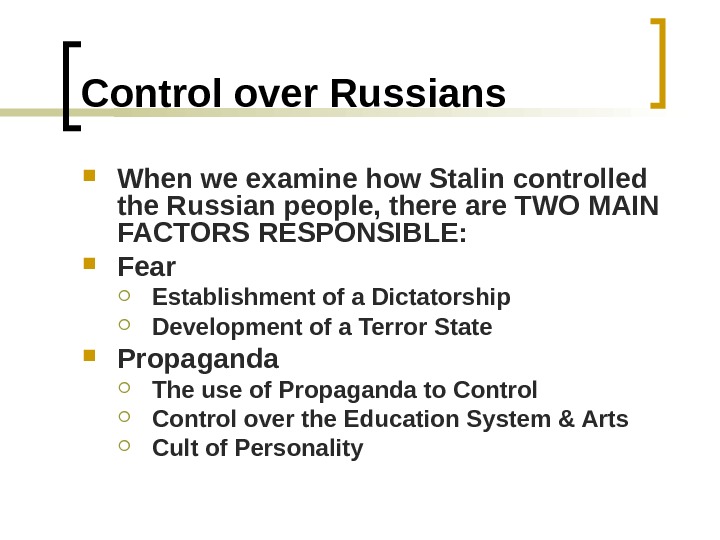
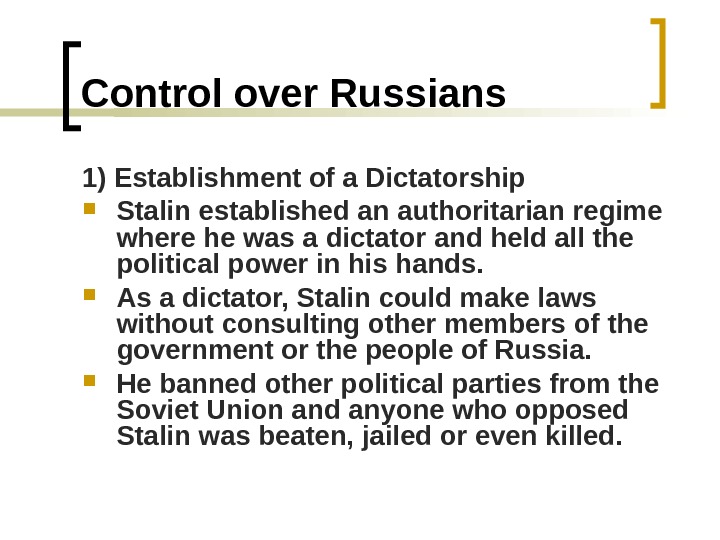
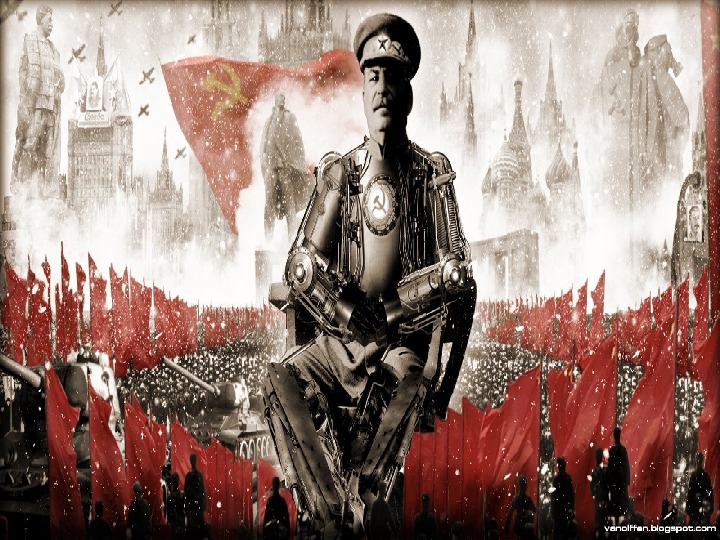

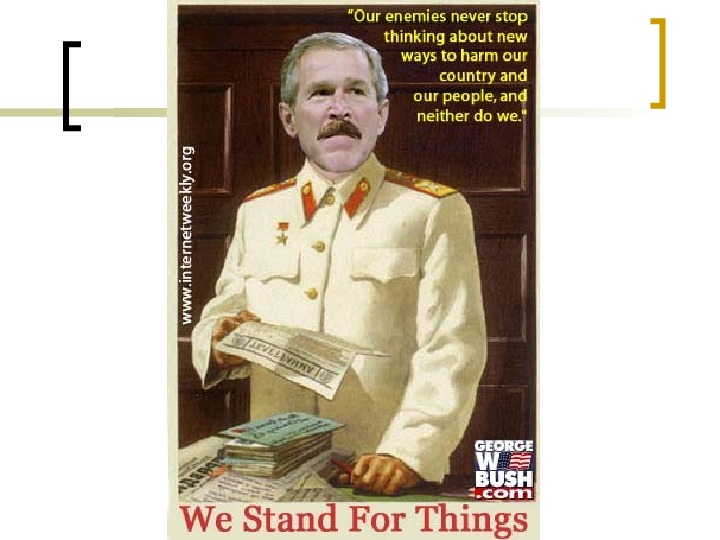
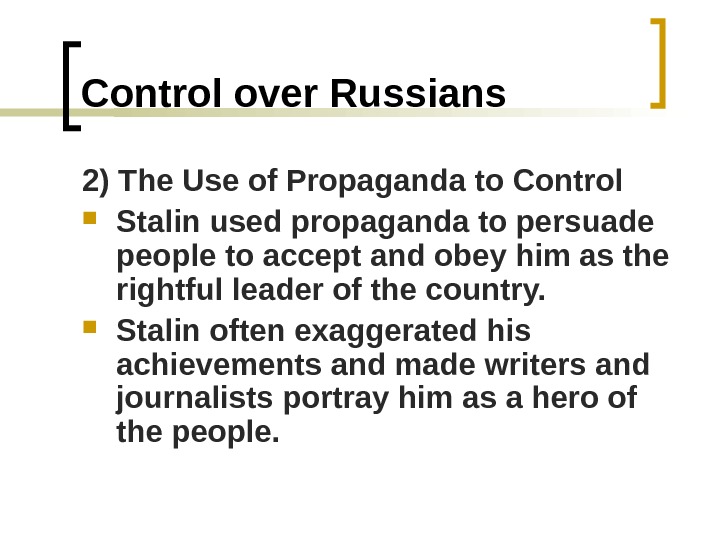
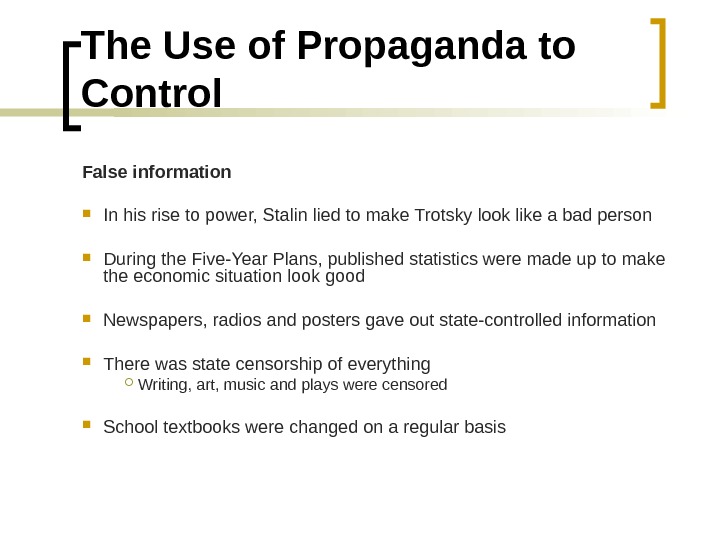

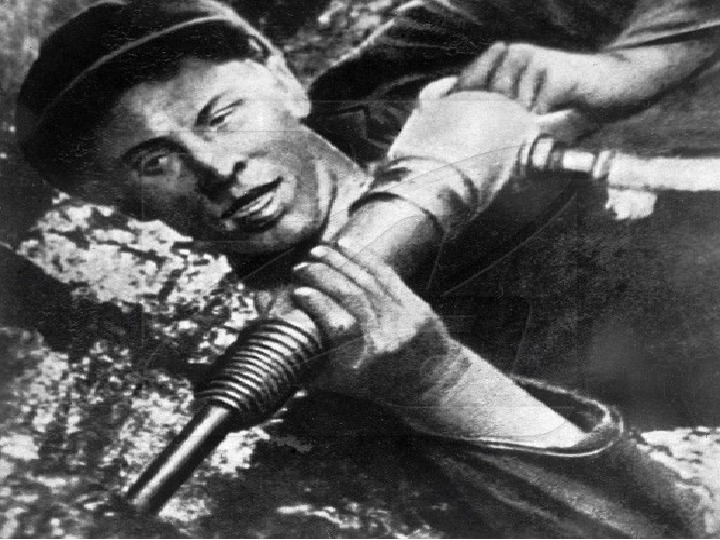
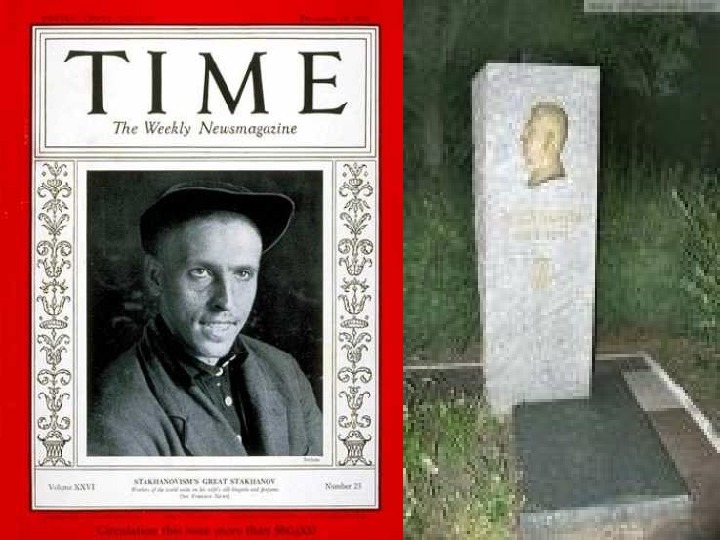
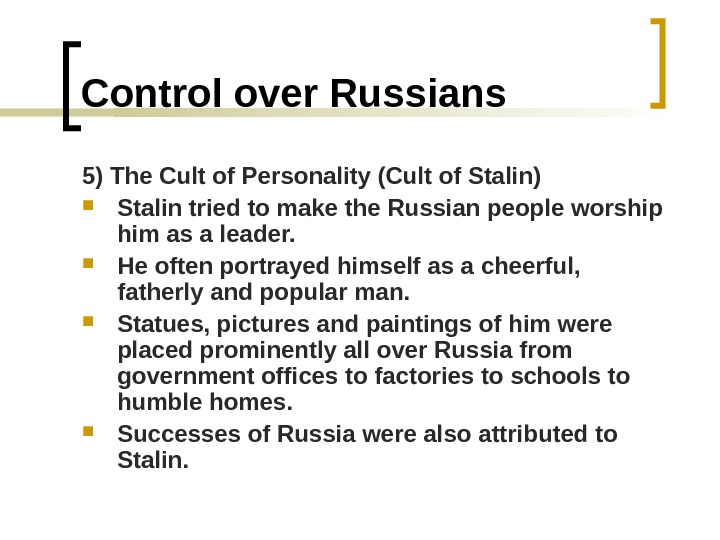
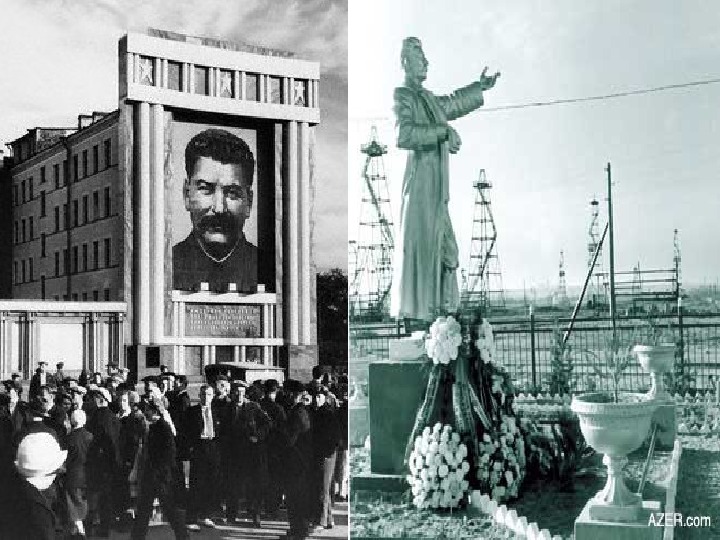
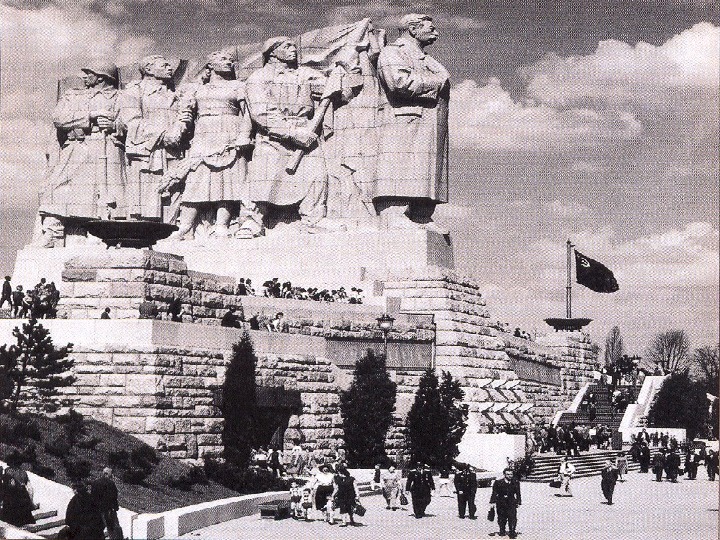

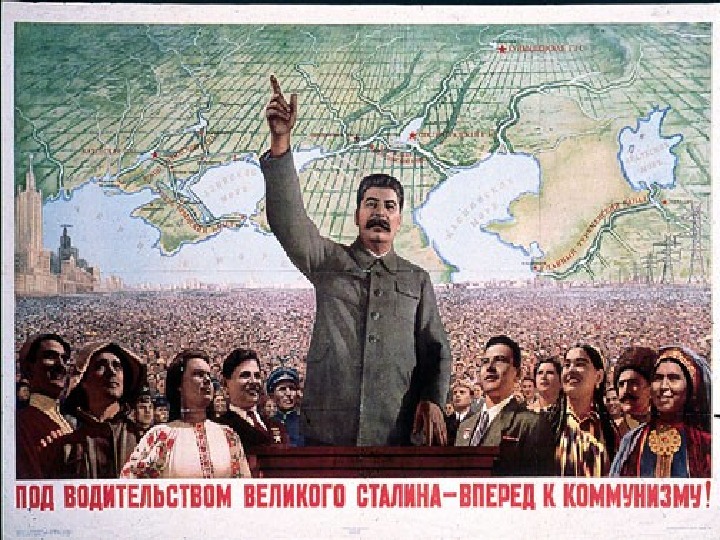
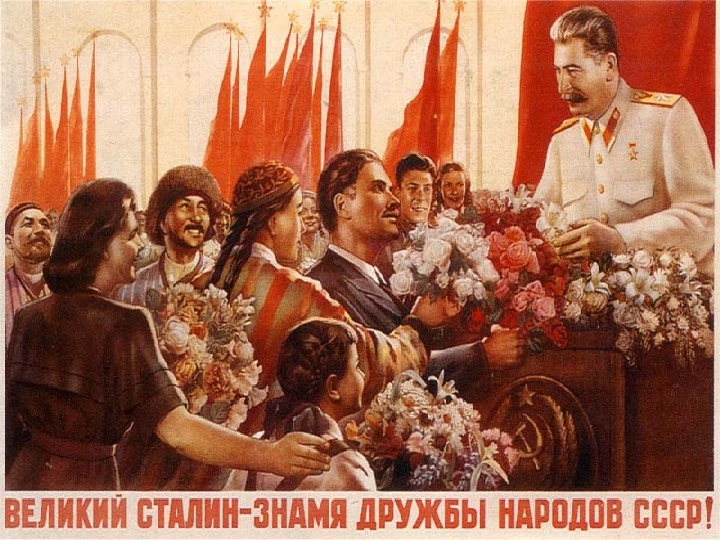
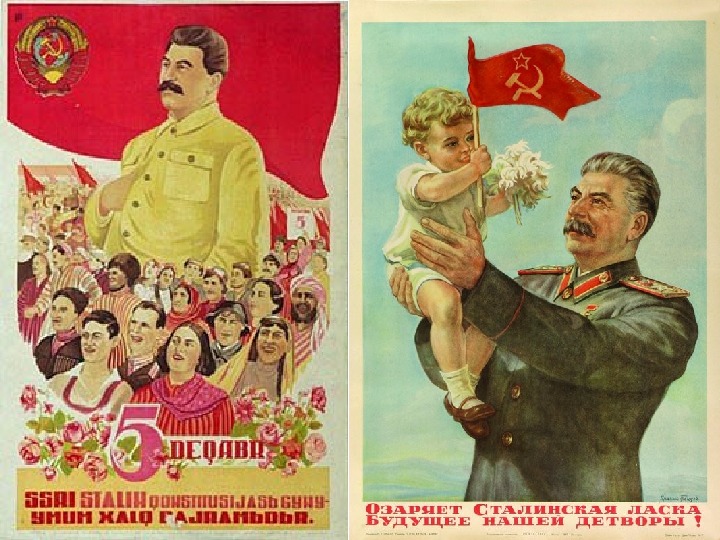
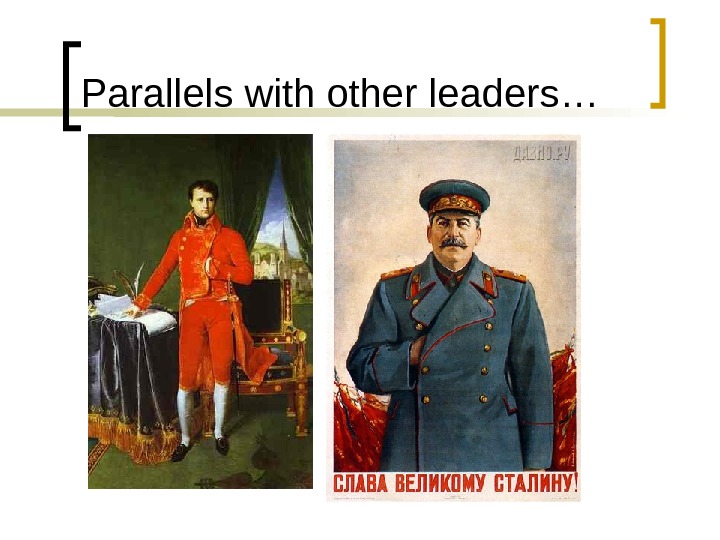
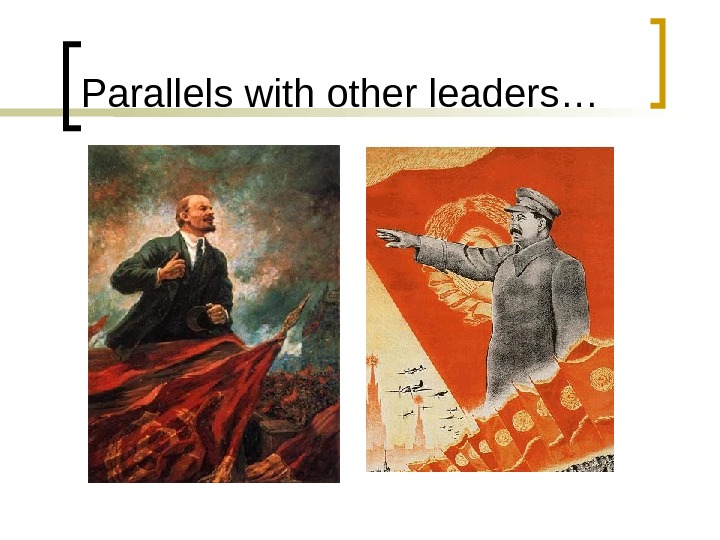
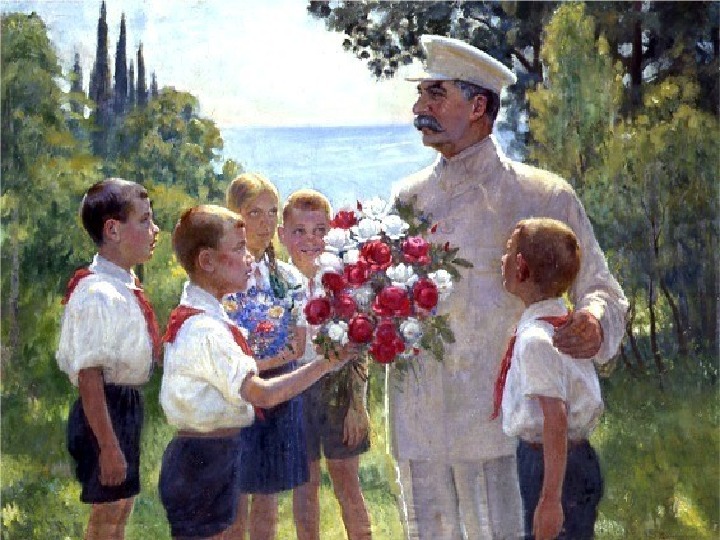
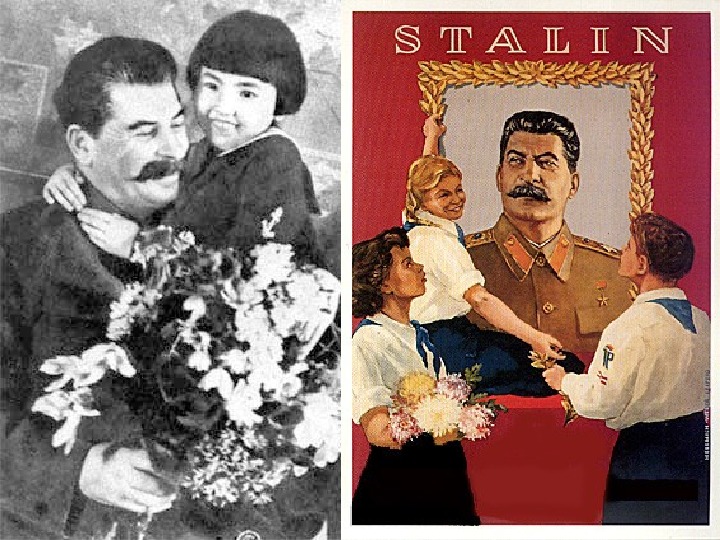
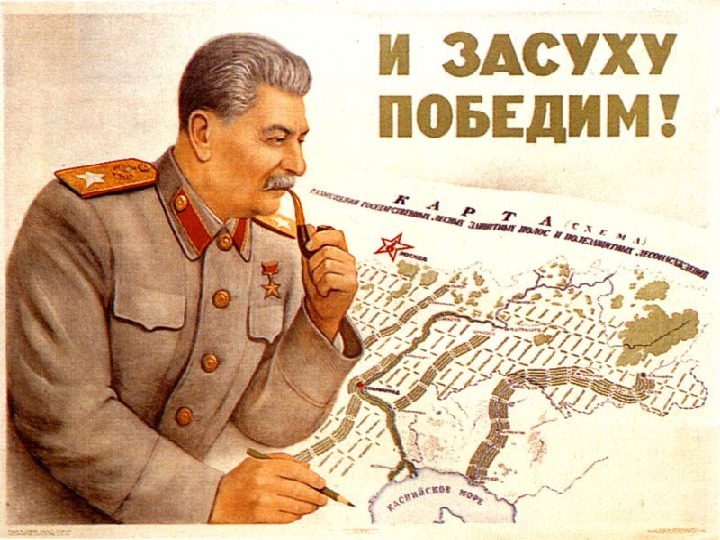
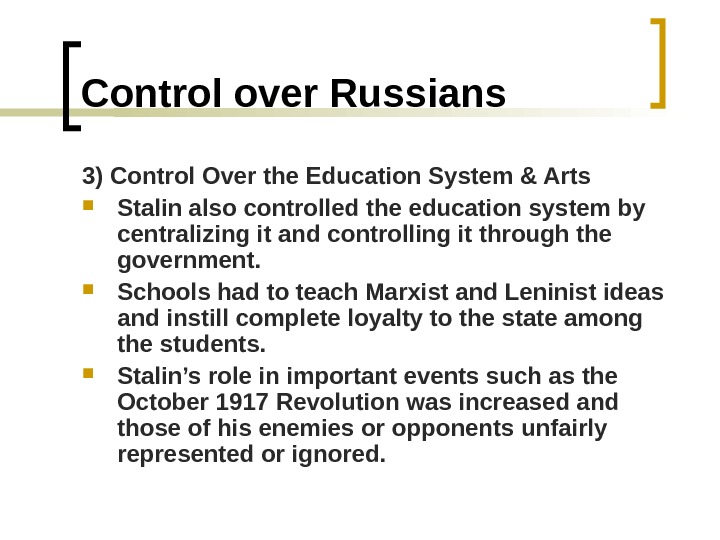
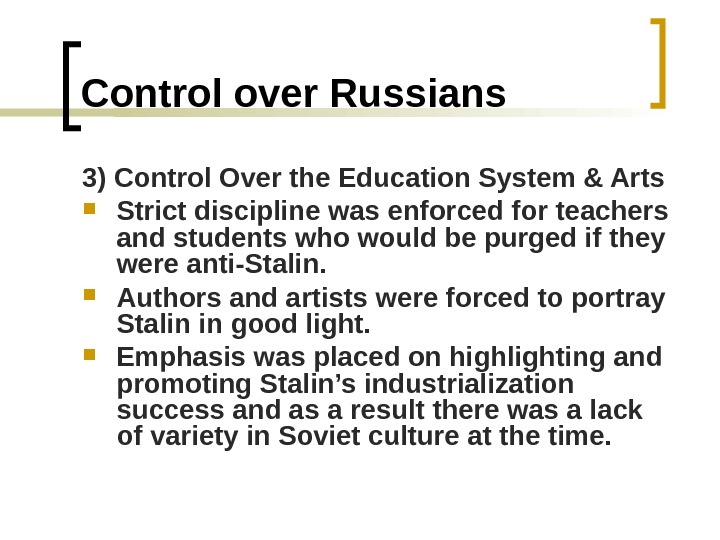
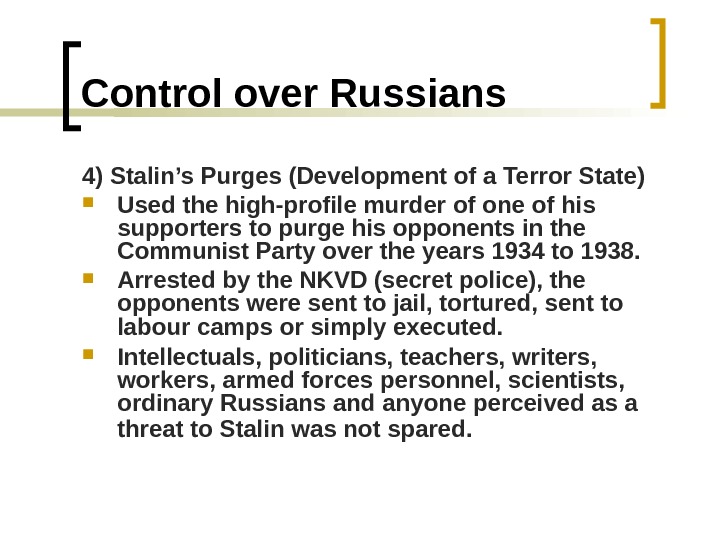
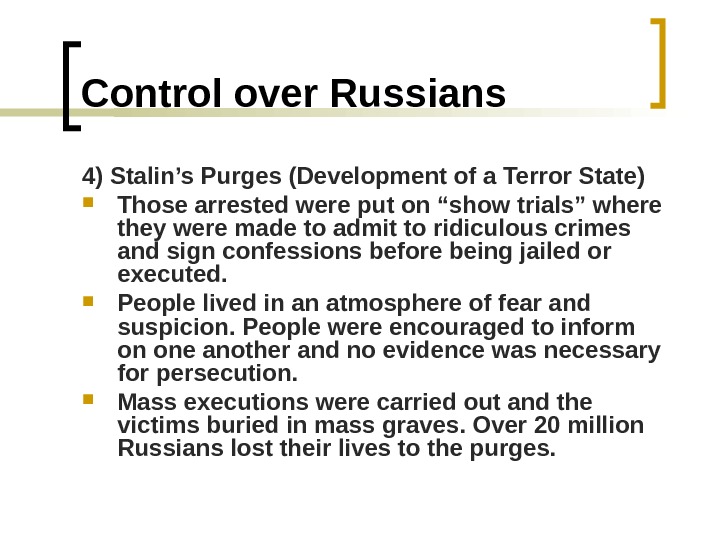

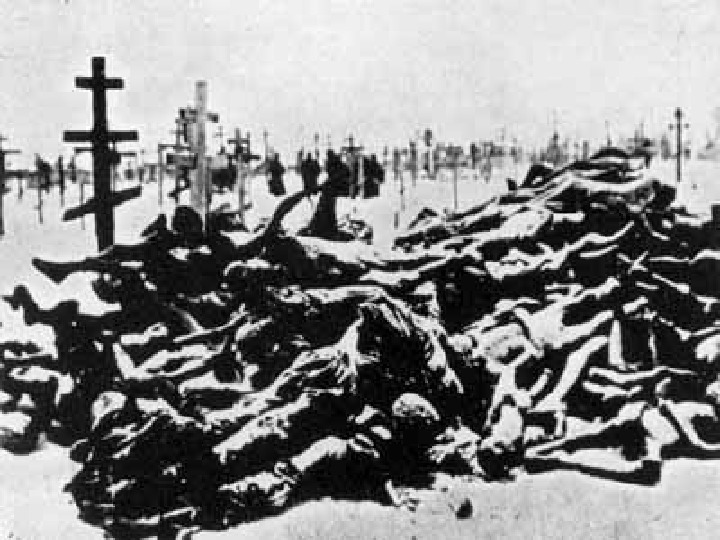
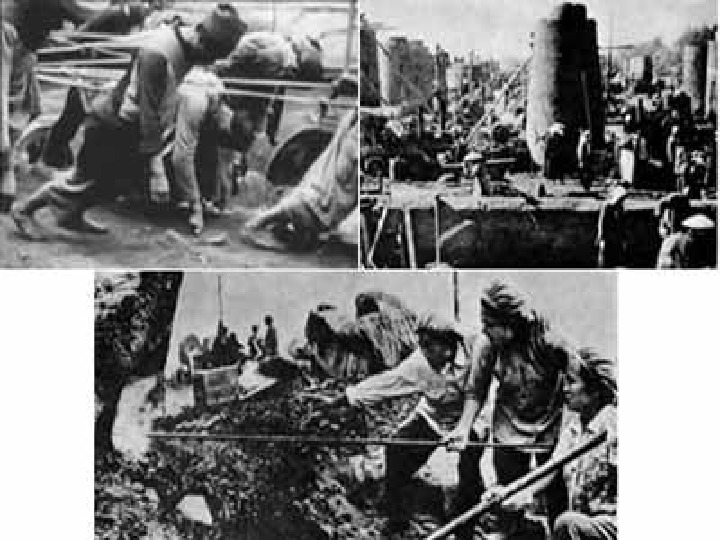

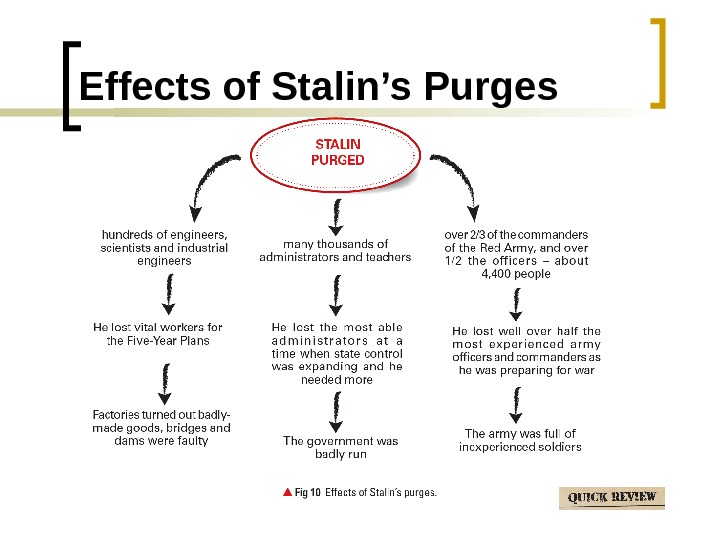
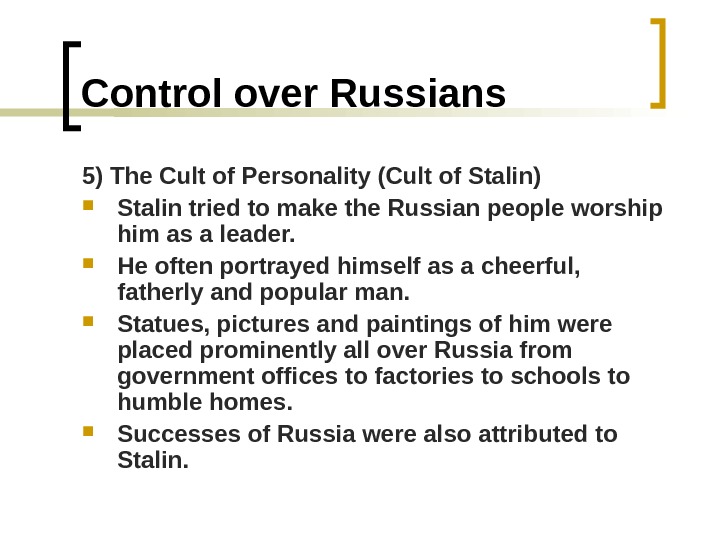

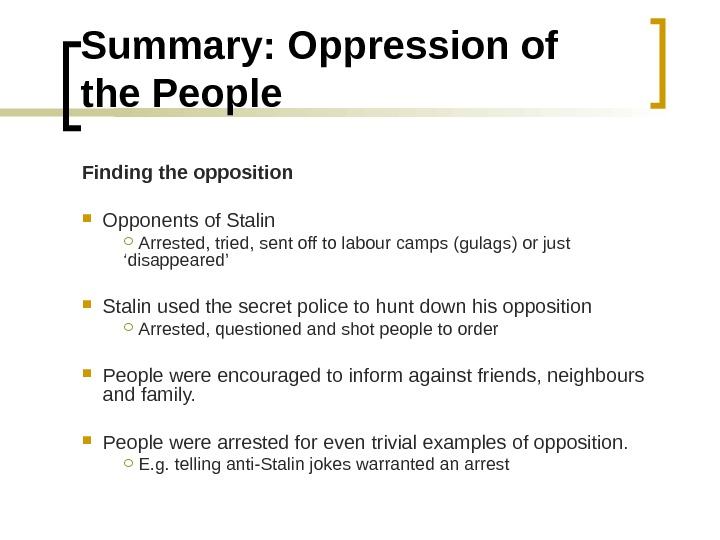
- Размер: 5.1 Mегабайта
- Количество слайдов: 78
Описание презентации Russia Under Stalin Part II: Stalin’s Rule по слайдам
 Russia Under Stalin Part II: Stalin’s Rule
Russia Under Stalin Part II: Stalin’s Rule
 Background By 1928 production in the USSR once again reached 1914 levels. The NEP had served a useful purpose. Why did Stalin decide to change course?
Background By 1928 production in the USSR once again reached 1914 levels. The NEP had served a useful purpose. Why did Stalin decide to change course?
 Background Was it ideological? A vast increase in production was needed for the transition from Socialism to Communism. Was Stalin trying to rush the process?
Background Was it ideological? A vast increase in production was needed for the transition from Socialism to Communism. Was Stalin trying to rush the process?
 Background Was Stalin trying to turn the population into a vast proletariat that would form the social base necessary for this transition?
Background Was Stalin trying to turn the population into a vast proletariat that would form the social base necessary for this transition?
 Background In 1931 Stalin said: “We must cover this distance in ten years. Either we do this or they will crush us. ” But in 1931, there was no substantial outside threat.
Background In 1931 Stalin said: “We must cover this distance in ten years. Either we do this or they will crush us. ” But in 1931, there was no substantial outside threat.
 Background Perhaps its roots in the political infighting that continued even after Stalin had come to dominate the party. The strongest proponents of the NEP were, after all, Rykov and Bukharin – Stalin’s most recent adversaries.
Background Perhaps its roots in the political infighting that continued even after Stalin had come to dominate the party. The strongest proponents of the NEP were, after all, Rykov and Bukharin – Stalin’s most recent adversaries.
 Two Goals Whatever the case, 1928 was a pivotal year. Stalin announced two goals: Collectivization of Agriculture – Stalin wanted to destroy the private farm and impose an industrial model on the countryside. Massive Industrialization – Production would be stepped up enormously and, in doing so, he would destroy the power and influence of the Nepmen and their supporters within the Party. The Vehicle for change in the countryside and the cities would be the First Five Year Plan. Centralized planning would determine everything.
Two Goals Whatever the case, 1928 was a pivotal year. Stalin announced two goals: Collectivization of Agriculture – Stalin wanted to destroy the private farm and impose an industrial model on the countryside. Massive Industrialization – Production would be stepped up enormously and, in doing so, he would destroy the power and influence of the Nepmen and their supporters within the Party. The Vehicle for change in the countryside and the cities would be the First Five Year Plan. Centralized planning would determine everything.
 How did the Five Year Plans build up the USSR’s Industry? Five-Year Plans introduced to make USSR self sufficient, not relying on trade with other countries Stalin’s economic committee, GOSPLAN Drew up the plans Set targets for industrial and agricultural growth Created a command economy – the state told factories what to produce and farmers what to grow
How did the Five Year Plans build up the USSR’s Industry? Five-Year Plans introduced to make USSR self sufficient, not relying on trade with other countries Stalin’s economic committee, GOSPLAN Drew up the plans Set targets for industrial and agricultural growth Created a command economy – the state told factories what to produce and farmers what to grow
 Three Five Year Plans Three Five-Year Plans First plan (1928 to 1932) Concentrated on expanding industry, transport and the power supply Second plan (1933 to 1938) Focused on more manufactured goods, in addition to first plan Third plan (began in 1939 but interrupted by outbreak of war) Production of ‘luxuries’ like bicycles and radios
Three Five Year Plans Three Five-Year Plans First plan (1928 to 1932) Concentrated on expanding industry, transport and the power supply Second plan (1933 to 1938) Focused on more manufactured goods, in addition to first plan Third plan (began in 1939 but interrupted by outbreak of war) Production of ‘luxuries’ like bicycles and radios
 What was Collectivisation? Collectivisation Stalin took all farmland set up huge state-run farms called collectives (kolkhozy) Peasants kept enough for themselves and sold the rest to the state Could not own land or sell food privately Had fixed hours and wages State provided homes, food, fuel, and clothing for the peasants
What was Collectivisation? Collectivisation Stalin took all farmland set up huge state-run farms called collectives (kolkhozy) Peasants kept enough for themselves and sold the rest to the state Could not own land or sell food privately Had fixed hours and wages State provided homes, food, fuel, and clothing for the peasants





 Problems of Collectivisation Resistance Many peasants resisted collectivisation As a result, food production went down, leading to another famine in 1932. Stalin sent soldiers to force collectivisation on the people Land was taken from the kulaks (people with the biggest farms) and millions were sent to labour camps. By 1930, the kolkhozy had been changed No longer huge state-run farms, but smaller collectives run by the local CP.
Problems of Collectivisation Resistance Many peasants resisted collectivisation As a result, food production went down, leading to another famine in 1932. Stalin sent soldiers to force collectivisation on the people Land was taken from the kulaks (people with the biggest farms) and millions were sent to labour camps. By 1930, the kolkhozy had been changed No longer huge state-run farms, but smaller collectives run by the local CP.
 Collectivization sometimes resembled civil war. One OGPU (security police) colonel told a foreign journalist: “ I am an old Bolshevik. I worked in the underground against the Tsar and then I fought in the Civil War. Did I do all that in order that I should now surround villages with machine guns and order my men to fire indiscriminately into crowds of peasants? Oh, no. ”
Collectivization sometimes resembled civil war. One OGPU (security police) colonel told a foreign journalist: “ I am an old Bolshevik. I worked in the underground against the Tsar and then I fought in the Civil War. Did I do all that in order that I should now surround villages with machine guns and order my men to fire indiscriminately into crowds of peasants? Oh, no. ”
 Collectivization Historian JP Nettle, The Soviet Achievement, notes: “… the squeeze and the Five Year Plan based on it were not relaxed. Agricultural production fell substantially in the early period of collectivization, but the quota of compulsory food deliveries to the state was maintained almost intact – the first commandment – as Stalin called it. The difference was made up in the kitchens and hearths of the collective households. ” The Farmers of the Soviet Union would be made to pay the vast cost of industrializing the country. The money could not be raised voluntarily within the USSR, nor could it be borrowed abroad. It was plied from the pockets of the peasants.
Collectivization Historian JP Nettle, The Soviet Achievement, notes: “… the squeeze and the Five Year Plan based on it were not relaxed. Agricultural production fell substantially in the early period of collectivization, but the quota of compulsory food deliveries to the state was maintained almost intact – the first commandment – as Stalin called it. The difference was made up in the kitchens and hearths of the collective households. ” The Farmers of the Soviet Union would be made to pay the vast cost of industrializing the country. The money could not be raised voluntarily within the USSR, nor could it be borrowed abroad. It was plied from the pockets of the peasants.
 Did Collectivisation Work? Did collectivisation work? By 1940, almost all farms were collectives Some collectives had good production figures and were used as model examples On the whole, collectives were producing enough food to feed peasants and workers in the industrial towns Thus, Stalin’s main aim of keeping the industry going was met YET kollhozes were used as source cows to milk all their resources to boost industry
Did Collectivisation Work? Did collectivisation work? By 1940, almost all farms were collectives Some collectives had good production figures and were used as model examples On the whole, collectives were producing enough food to feed peasants and workers in the industrial towns Thus, Stalin’s main aim of keeping the industry going was met YET kollhozes were used as source cows to milk all their resources to boost industry



 Negative impacts of Collectivization – Starving child in the arms of his mother
Negative impacts of Collectivization – Starving child in the arms of his mother
 Industrialization The first five year plan was adopted in April, 1929. Priority was given to heavy industrial, not consumer goods. Total output was to increase 250%. Heavy Industrial output was to grow 330%. Pig iron output was to increase 300%. Coal production – 200%. Electrical productionn – 400%.
Industrialization The first five year plan was adopted in April, 1929. Priority was given to heavy industrial, not consumer goods. Total output was to increase 250%. Heavy Industrial output was to grow 330%. Pig iron output was to increase 300%. Coal production – 200%. Electrical productionn – 400%.
 Industrialization When some party leaders challenged the figures, Stalin had them raised – eventually calling for the completion of the plan in four, not five years.
Industrialization When some party leaders challenged the figures, Stalin had them raised – eventually calling for the completion of the plan in four, not five years.
 Industrialization Targets were impossible. Supply and distribution problems arose. Buildings were put up and no equipment provided. Equipment rusted because it was delivered to a place with no building to house it.
Industrialization Targets were impossible. Supply and distribution problems arose. Buildings were put up and no equipment provided. Equipment rusted because it was delivered to a place with no building to house it.
 Industrialization Shoddy products were produced that could not function – just to reach production targets. Sometimes transportation facilities didn’t move products to their final destinations.
Industrialization Shoddy products were produced that could not function – just to reach production targets. Sometimes transportation facilities didn’t move products to their final destinations.
 Industrialization Despite the problems, Stalin remained unmoved. Economic goals must have been secondary to Stalin. What he wanted was a transformation of Soviet society. All were to be made subservient to the state. It worked.
Industrialization Despite the problems, Stalin remained unmoved. Economic goals must have been secondary to Stalin. What he wanted was a transformation of Soviet society. All were to be made subservient to the state. It worked.
 Excavating for the building of a steel plant in Magnitogorsk, 1930 s
Excavating for the building of a steel plant in Magnitogorsk, 1930 s



 The First Five Year Plan When it ended, after 4 years, the 1 st 5 year Plan was a failure in terms of reaching its targets – in agriculture and industry. It did produce a new society. The Soviet pattern of big enterprises was established. All workers were subservient to the state. Money foreign purchases was expropriated from nepmen and farmers. Central Asia and Siberia were opened for development.
The First Five Year Plan When it ended, after 4 years, the 1 st 5 year Plan was a failure in terms of reaching its targets – in agriculture and industry. It did produce a new society. The Soviet pattern of big enterprises was established. All workers were subservient to the state. Money foreign purchases was expropriated from nepmen and farmers. Central Asia and Siberia were opened for development.
 Achievements & Failures 1. There were huge achievements in the following areas: new cities dams/ hydroelectric power transport & communications the Moscow Underground farm machinery electricity coal steel fertilizers plastic no unemployment doctors & medicine education. 2. The USSR was also transformed into a modern state and was able to resist Hitler’s invasion in the 1940 s 1. Poorly organised – inefficiency, duplication of effort and waste. 2. Appalling human cost: discipline (sacked if late) secret police slave labour camps (for those who made mistakes) accidents & deaths (100, 000 workers died building the Belomor Canal) few consumer goods poor housing wages FELL no human rights
Achievements & Failures 1. There were huge achievements in the following areas: new cities dams/ hydroelectric power transport & communications the Moscow Underground farm machinery electricity coal steel fertilizers plastic no unemployment doctors & medicine education. 2. The USSR was also transformed into a modern state and was able to resist Hitler’s invasion in the 1940 s 1. Poorly organised – inefficiency, duplication of effort and waste. 2. Appalling human cost: discipline (sacked if late) secret police slave labour camps (for those who made mistakes) accidents & deaths (100, 000 workers died building the Belomor Canal) few consumer goods poor housing wages FELL no human rights
 Volga Canal – Wikipedia. com The Moscow Canal ( Russian : Кан л мени Москвааиаыа ), named the Moscow-Volga Canal until the year 1947, is a canal that connects the Moskva River with the main transportation artery of European Russia , the Volga River. It is located in Moscow itself and in the Moscow Oblast. The canal connects to the Moskva River 191 kilometers from its estuary in Tushino (an area in the north-west of Moscow), and to the Volga River in the town of Dubna, just upstream of the dam of the Ivankovo Reservoir. Length of the canal is 128 km. It was constructed from the year 1932 to the year 1937 by gulag prisoners during the early to mid Stalin era. Thanks to the Moscow Canal, Moscow has access to five seas: the White Sea, Baltic Sea, Caspian Sea, Sea of Azov, and the Black Sea. This is why Moscow is sometimes called the «port of the five seas» ( порт пяти морей ). Apart from transportation the canal also provides for about half of Moscow’s water consumption, and the shores of its numerous reservoirs are used as recreation zones.
Volga Canal – Wikipedia. com The Moscow Canal ( Russian : Кан л мени Москвааиаыа ), named the Moscow-Volga Canal until the year 1947, is a canal that connects the Moskva River with the main transportation artery of European Russia , the Volga River. It is located in Moscow itself and in the Moscow Oblast. The canal connects to the Moskva River 191 kilometers from its estuary in Tushino (an area in the north-west of Moscow), and to the Volga River in the town of Dubna, just upstream of the dam of the Ivankovo Reservoir. Length of the canal is 128 km. It was constructed from the year 1932 to the year 1937 by gulag prisoners during the early to mid Stalin era. Thanks to the Moscow Canal, Moscow has access to five seas: the White Sea, Baltic Sea, Caspian Sea, Sea of Azov, and the Black Sea. This is why Moscow is sometimes called the «port of the five seas» ( порт пяти морей ). Apart from transportation the canal also provides for about half of Moscow’s water consumption, and the shores of its numerous reservoirs are used as recreation zones.






 Problems with the Five Year Plans Problems with the Five-Year Plans Problem 1: the quality of goods suffered Rapid production led to poor quality of goods Workers were not trained properly Stalin desperately sought help from Western experts Problem 2: human cost People were crowded into new industrial towns to live and work in appalling conditions Living conditions were cramped with little running water or sanitation
Problems with the Five Year Plans Problems with the Five-Year Plans Problem 1: the quality of goods suffered Rapid production led to poor quality of goods Workers were not trained properly Stalin desperately sought help from Western experts Problem 2: human cost People were crowded into new industrial towns to live and work in appalling conditions Living conditions were cramped with little running water or sanitation
 Controlling the Workers Controlling the workers Local party workers set up committees and supervised all levels of industry Food was rationed by the state. Ration cards, wages and housing were allocated by committee Workers who met targets were rewarded in the form of extra rations. Those who were thought to not be working hard enough had their rations cut Food was in very short supply – an effective way to control workers
Controlling the Workers Controlling the workers Local party workers set up committees and supervised all levels of industry Food was rationed by the state. Ration cards, wages and housing were allocated by committee Workers who met targets were rewarded in the form of extra rations. Those who were thought to not be working hard enough had their rations cut Food was in very short supply – an effective way to control workers
 How did Stalin use propaganda to control people? Propaganda: the deliberate spreading of ideas and information for the purpose of promoting a specific cause The Bolsheviks used propaganda to start the Revolution Stalin used propaganda to convince people he was a closer friend of Lenin than he really was Stalin increasingly used extreme propaganda and censorship to control the people
How did Stalin use propaganda to control people? Propaganda: the deliberate spreading of ideas and information for the purpose of promoting a specific cause The Bolsheviks used propaganda to start the Revolution Stalin used propaganda to convince people he was a closer friend of Lenin than he really was Stalin increasingly used extreme propaganda and censorship to control the people
 Control over Russians When we examine how Stalin controlled the Russian people, there are TWO MAIN FACTORS RESPONSIBLE: Fear Establishment of a Dictatorship Development of a Terror State Propaganda The use of Propaganda to Control over the Education System & Arts Cult of Personality
Control over Russians When we examine how Stalin controlled the Russian people, there are TWO MAIN FACTORS RESPONSIBLE: Fear Establishment of a Dictatorship Development of a Terror State Propaganda The use of Propaganda to Control over the Education System & Arts Cult of Personality
 Control over Russians 1) Establishment of a Dictatorship Stalin established an authoritarian regime where he was a dictator and held all the political power in his hands. As a dictator, Stalin could make laws without consulting other members of the government or the people of Russia. He banned other political parties from the Soviet Union and anyone who opposed Stalin was beaten, jailed or even killed.
Control over Russians 1) Establishment of a Dictatorship Stalin established an authoritarian regime where he was a dictator and held all the political power in his hands. As a dictator, Stalin could make laws without consulting other members of the government or the people of Russia. He banned other political parties from the Soviet Union and anyone who opposed Stalin was beaten, jailed or even killed.



 Control over Russians 2) The Use of Propaganda to Control Stalin used propaganda to persuade people to accept and obey him as the rightful leader of the country. Stalin often exaggerated his achievements and made writers and journalists portray him as a hero of the people.
Control over Russians 2) The Use of Propaganda to Control Stalin used propaganda to persuade people to accept and obey him as the rightful leader of the country. Stalin often exaggerated his achievements and made writers and journalists portray him as a hero of the people.
 The Use of Propaganda to Control False information In his rise to power, Stalin lied to make Trotsky look like a bad person During the Five-Year Plans, published statistics were made up to make the economic situation look good Newspapers, radios and posters gave out state-controlled information There was state censorship of everything Writing, art, music and plays were censored School textbooks were changed on a regular basis
The Use of Propaganda to Control False information In his rise to power, Stalin lied to make Trotsky look like a bad person During the Five-Year Plans, published statistics were made up to make the economic situation look good Newspapers, radios and posters gave out state-controlled information There was state censorship of everything Writing, art, music and plays were censored School textbooks were changed on a regular basis
 The Use of Propaganda in Industrial Production How did propaganda increase industrial production? The Five-Year Plans encouraged everyone to exceed their targets Alexei Stakhanov A coalminer who mined 102 tons of coal with his work gang in one shift in 1935 Posters, newspapers and radio reports presented him as a hero, urging Russians to follow his example Later, Stalin admitted that Stakhanov had been working on an easy seam of coal with the best equipment
The Use of Propaganda in Industrial Production How did propaganda increase industrial production? The Five-Year Plans encouraged everyone to exceed their targets Alexei Stakhanov A coalminer who mined 102 tons of coal with his work gang in one shift in 1935 Posters, newspapers and radio reports presented him as a hero, urging Russians to follow his example Later, Stalin admitted that Stakhanov had been working on an easy seam of coal with the best equipment


 Control over Russians 5) The Cult of Personality (Cult of Stalin) Stalin tried to make the Russian people worship him as a leader. He often portrayed himself as a cheerful, fatherly and popular man. Statues, pictures and paintings of him were placed prominently all over Russia from government offices to factories to schools to humble homes. Successes of Russia were also attributed to Stalin.
Control over Russians 5) The Cult of Personality (Cult of Stalin) Stalin tried to make the Russian people worship him as a leader. He often portrayed himself as a cheerful, fatherly and popular man. Statues, pictures and paintings of him were placed prominently all over Russia from government offices to factories to schools to humble homes. Successes of Russia were also attributed to Stalin.






 Parallels with other leaders…
Parallels with other leaders…
 Parallels with other leaders…
Parallels with other leaders…



 Control over Russians 3) Control Over the Education System & Arts Stalin also controlled the education system by centralizing it and controlling it through the government. Schools had to teach Marxist and Leninist ideas and instill complete loyalty to the state among the students. Stalin’s role in important events such as the October 1917 Revolution was increased and those of his enemies or opponents unfairly represented or ignored.
Control over Russians 3) Control Over the Education System & Arts Stalin also controlled the education system by centralizing it and controlling it through the government. Schools had to teach Marxist and Leninist ideas and instill complete loyalty to the state among the students. Stalin’s role in important events such as the October 1917 Revolution was increased and those of his enemies or opponents unfairly represented or ignored.
 Control over Russians 3) Control Over the Education System & Arts Strict discipline was enforced for teachers and students who would be purged if they were anti-Stalin. Authors and artists were forced to portray Stalin in good light. Emphasis was placed on highlighting and promoting Stalin’s industrialization success and as a result there was a lack of variety in Soviet culture at the time.
Control over Russians 3) Control Over the Education System & Arts Strict discipline was enforced for teachers and students who would be purged if they were anti-Stalin. Authors and artists were forced to portray Stalin in good light. Emphasis was placed on highlighting and promoting Stalin’s industrialization success and as a result there was a lack of variety in Soviet culture at the time.
 Control over Russians 4) Stalin’s Purges (Development of a Terror State) Used the high-profile murder of one of his supporters to purge his opponents in the Communist Party over the years 1934 to 1938. Arrested by the NKVD (secret police), the opponents were sent to jail, tortured, sent to labour camps or simply executed. Intellectuals, politicians, teachers, writers, workers, armed forces personnel, scientists, ordinary Russians and anyone perceived as a threat to Stalin was not spared.
Control over Russians 4) Stalin’s Purges (Development of a Terror State) Used the high-profile murder of one of his supporters to purge his opponents in the Communist Party over the years 1934 to 1938. Arrested by the NKVD (secret police), the opponents were sent to jail, tortured, sent to labour camps or simply executed. Intellectuals, politicians, teachers, writers, workers, armed forces personnel, scientists, ordinary Russians and anyone perceived as a threat to Stalin was not spared.
 Control over Russians 4) Stalin’s Purges (Development of a Terror State) Those arrested were put on “show trials” where they were made to admit to ridiculous crimes and sign confessions before being jailed or executed. People lived in an atmosphere of fear and suspicion. People were encouraged to inform on one another and no evidence was necessary for persecution. Mass executions were carried out and the victims buried in mass graves. Over 20 million Russians lost their lives to the purges.
Control over Russians 4) Stalin’s Purges (Development of a Terror State) Those arrested were put on “show trials” where they were made to admit to ridiculous crimes and sign confessions before being jailed or executed. People lived in an atmosphere of fear and suspicion. People were encouraged to inform on one another and no evidence was necessary for persecution. Mass executions were carried out and the victims buried in mass graves. Over 20 million Russians lost their lives to the purges.
 Stalin probably perfected the art of ‘air-brushing’
Stalin probably perfected the art of ‘air-brushing’



 Effects of Stalin’s Purges
Effects of Stalin’s Purges
 Control over Russians 5) The Cult of Personality (Cult of Stalin) Stalin tried to make the Russian people worship him as a leader. He often portrayed himself as a cheerful, fatherly and popular man. Statues, pictures and paintings of him were placed prominently all over Russia from government offices to factories to schools to humble homes. Successes of Russia were also attributed to Stalin.
Control over Russians 5) The Cult of Personality (Cult of Stalin) Stalin tried to make the Russian people worship him as a leader. He often portrayed himself as a cheerful, fatherly and popular man. Statues, pictures and paintings of him were placed prominently all over Russia from government offices to factories to schools to humble homes. Successes of Russia were also attributed to Stalin.
 Summary: Using Fear to Control People Stalin’s policies were hard on the people Despite state propaganda convincing people to make sacrifices, opposition grew in the 1930 s Hardships due to his policies were worsened by the 1932 famine, increasing opposition Stalin stamped out opposition ruthlessly through the use of fear
Summary: Using Fear to Control People Stalin’s policies were hard on the people Despite state propaganda convincing people to make sacrifices, opposition grew in the 1930 s Hardships due to his policies were worsened by the 1932 famine, increasing opposition Stalin stamped out opposition ruthlessly through the use of fear
 Summary: Oppression of the People Finding the opposition Opponents of Stalin Arrested, tried, sent off to labour camps (gulags) or just ‘disappeared’ Stalin used the secret police to hunt down his opposition Arrested, questioned and shot people to order People were encouraged to inform against friends, neighbours and family. People were arrested for even trivial examples of opposition. E. g. telling anti-Stalin jokes warranted an arrest
Summary: Oppression of the People Finding the opposition Opponents of Stalin Arrested, tried, sent off to labour camps (gulags) or just ‘disappeared’ Stalin used the secret police to hunt down his opposition Arrested, questioned and shot people to order People were encouraged to inform against friends, neighbours and family. People were arrested for even trivial examples of opposition. E. g. telling anti-Stalin jokes warranted an arrest
